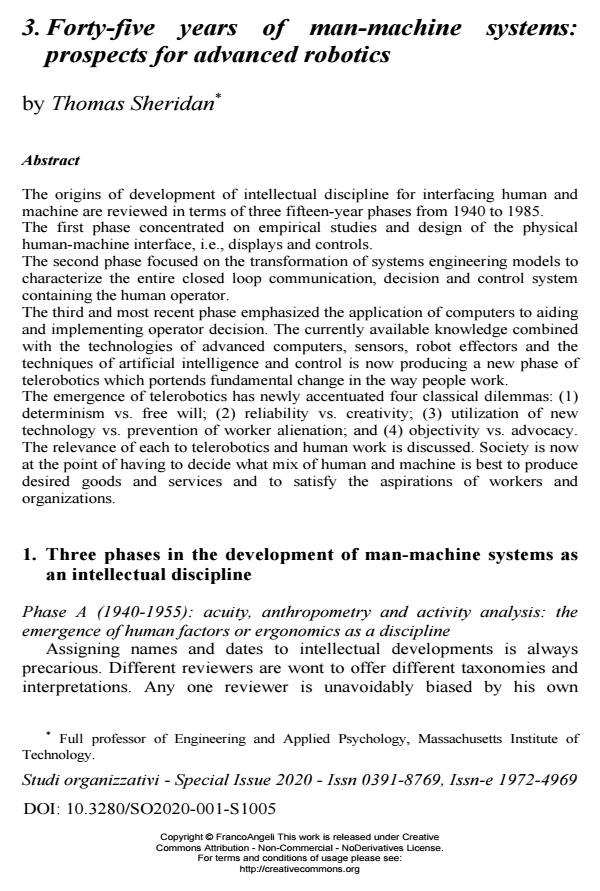Forty-five years of man-machine systems: prospects for advanced robotics
Journal title STUDI ORGANIZZATIVI
Author/s Thomas Sheridan
Publishing Year 2020 Issue 2020/suppl. 1
Language English Pages 13 P. 73-85 File size 208 KB
DOI 10.3280/SO2020-001-S1005
DOI is like a bar code for intellectual property: to have more infomation
click here

FrancoAngeli is member of Publishers International Linking Association, Inc (PILA), a not-for-profit association which run the CrossRef service enabling links to and from online scholarly content.
The origins of development of intellectual discipline for interfacing human and machine are reviewed in terms of three fifteen-year phases from 1940 to 1985. The first phase concentrated on empirical studies and design of the physical human-machine interface, i.e., displays and controls. The second phase focused on the transformation of systems engineering models to characterize the entire closed loop communication, decision and control system containing the human operator. The third and most recent phase emphasized the application of computers to aiding and implementing operator decision. The currently available knowledge combined with the technologies of advanced computers, sensors, robot effectors and the techniques of artificial intelligence and control is now producing a new phase of telerobotics which portends fundamental change in the way people work. The emergence of telerobotics has newly accentuated four classical dilemmas: (1) determinism vs. free will; (2) reliability vs. creativity; (3) utilization of new technology vs. prevention of worker alienation; and (4) objectivity vs. advocacy. The relevance of each to telerobotics and human work is discussed. Society is now at the point of having to decide what mix of human and machine is best to produce desired goods and services and to satisfy the aspirations of workers and organizations.
Thomas Sheridan, Forty-five years of man-machine systems: prospects for advanced robotics in "STUDI ORGANIZZATIVI " suppl. 1/2020, pp 73-85, DOI: 10.3280/SO2020-001-S1005